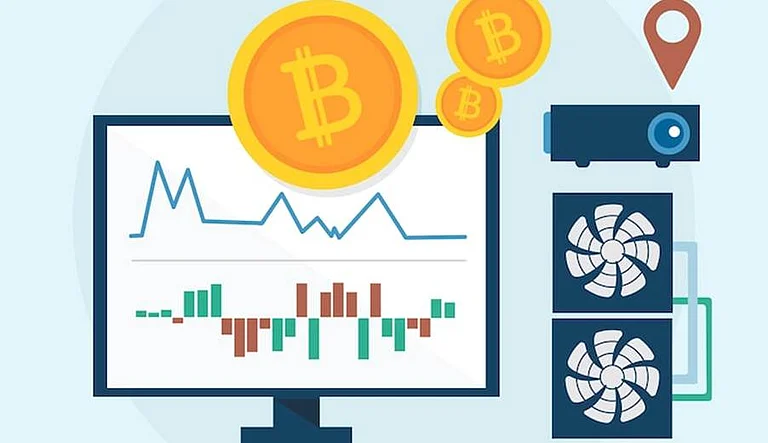In DeFi, liquidity pools fuel everything from automated trading to yield farming. But as these systems become larger, so do the risks—especially for pools of low liquidity, which have been repeatedly targeted in flash loan manipulation attacks. Combined with the use of a flash loan, an attacker is able to distort prices in seconds, trick smart contracts, and garner enormous profits-all within a single transaction.
This article develops what the reasons are for low-liquidity pools being vulnerable, how flash loan attacks exploit them, and what can be done at this time to reduce risk.
Understanding Low-Liquidity Pools
Liquidity pools refer to the collections of tokens that enable trading on AMMs such as Uniswap, PancakeSwap, and SushiSwap. They are a substitute for traditional order books through which instantaneous swapping of assets becomes possible.
A pool with low liquidity is a pool with low total value locked inside. Due to the limited number of tokens available, strong price movements come with any large trade.
Characteristics of Low-Liquidity Pools
Smaller token reserves
Higher price impact per trade
Vulnerable to slippage
Often contain new, volatile, or experimental tokens
Less arbitrage oversight, fewer market makers
These factors can produce a volatile situation in which prices can be influenced with rapidity and highly charged emotions.
What are flash loans?
Flash loans allow anyone to borrow large amounts of crypto instantaneously-without collateral-so long as the amount borrowed is returned in the same transaction.
This makes them:
Fast
Capital-efficient
Strong for arbitrage
Problematic when exploited against weak DeFi systems
Attackers are using them because access to millions of dollars in liquidity is free and immediate, so manipulation is possible even for those with very minimal capital.
Why Low-Liquidity Pools Are Easy Targets for Flash Loan Manipulation
The fundamental reason is straightforward: low-liquidity pools are very sensitive to large trades. When an attacker uses a massive flash loan to trade in such a pool, the AMM formula reacts in an extreme way, resulting in huge price distortions.
Below are the expanded, detailed reasons.
1. High Price Impact From Large Trades
AMMs are designed to automatically adjust token prices depending on the ratio of assets inside the pool. In a highly liquid pool, this changes very little, even with big trades. Thus, the following happens:
A heavy buy or sell results in little price movement
Small discrepancies are quickly corrected by arbitrage bots.
The pool naturally remains stable
In low-liquidity pools, however, it is a different situation altogether:
Even a moderate trade can greatly move the price of the token.
A flash-loan attacker can execute a single massive trade that immediately moves the price hundreds of percent higher or lower.
It does not have mechanisms of defence that would stop or even limit such abnormal trades.
This rapid distortion, when the pool is too shallow to absorb the shock, becomes highly profitable for attackers.
2. AMMs Automatically Trust Manipulated Prices
The major weakness with low-liquidity pools is that AMMs consider the latest state of the pool as the current market price.
If an attacker suddenly buys a large portion of the pool:
AMM assumes demand has increased
The price rises immediately and artificially
Connected protocols (lending, staking, yield aggregator) read this fake price as real
Because most low-liquidity pools do not use external oracles, they trust their own distorted price, allowing for powerful manipulations.
3. Minimum Capital Required to Shift the Market
The smaller the pool, the easier it is for attackers.
Example:
Pool A: $20 million liquidity
– 10% moving price might require millions
Pool B: $200,000 liquidity
– For the same 10% move, it may only take $20,000
This creates an incentive for attackers:
Lower capital requirement
Higher profit potential
Minimal risk
Flash loans amplify this advantage considerably.
4. Volatile or Illiquid Tokens Increase Manipulation Risk
Low-liquidity pools involve:
Meme coins
New project tokens
Governance or reward tokens
Tokens with limited external markets
These assets lack:
Price discovery
Strong trading volume
External price references
Therefore,
Manipulated price swings look "normal"
Oracles cannot verify correct pricing
Market reactions lag behind manipulation
Attackers exploit this uncertainty.
5. Slippage Tolerance Behaves Poorly in Small Pools
High slippage tolerance is often set to allow trades in small pools to go through.
Attackers exploit this by:
Price manipulation
Forcing through trades at inflated/slashed values
Draining tokens from unsuspecting users
Closing the manipulated position after profit
This form of manipulation does not require breaching a smart contract—only abusing liquidity weakness.
6. Flash Loan Capital Amplifies Pool Instability
Speed matters in DeFi.
A crypto flash loan instantly injects huge amounts of capital, enabling the attackers to:
Pool price management
Performing Chained Trades
Trigger liquidations on lending platforms
Manipulate oracle values
Drain collateral
Low-liquidity pools are too shallow to withstand sudden shocks.
Because flash loan attacks happen within a single block, defenders don't have time to react.
7. Weak Oracles and Internal Pricing Methods
Many small pools use:
Internal AMM spot prices
Time-sensitive internal oracles
Poor price monitoring
Attackers can use flash loans to move the internal pool price drastically, then exploit protocols depending on that price, including:
Incorrect collateral valuations
Wrong liquidation events
Underpriced or overpriced borrowing
Arbitrage extraction opportunities
That domino effect is why low-liquidity pools pose systemic risk.
8. Inadequate Protections in Smart Contracts
Many small pools are:
New
Deployed rapidly
Under-audited
Built by inexperienced teams
They lack:
Circuit breakers
Max trade size limits
Anti-manipulation checks
TWAP-based validation
Dynamic slippage controls
Without these protections, flash loan manipulation becomes trivial.
9. Lack of Arbitrage Bots to Stabilize Prices
High-liquidity pools attract:
Market Makers
Arbitrage bots
Long-term liquidity providers
These actors stabilize prices.
Low-liquidity pools:
Minimum arbitrage participation
Experience longer periods of price distortion
Allow artificially inflated or deflated prices to persist
This gives the attackers more time to profit.
10. Cross-Protocol Price Dependency Causes Cascading Failures
Most DeFi systems index DEX prices for:
Collateral health
Loan thresholds
Stake rewards
Yield calculations
A manipulated pool can:
Give a token an inflated price
Allow attackers to borrow stablecoins by using overvalued collateral.
Deflate price after borrowing
Leave the protocol undercollateralized
A $50,000 pool can trigger more than $10 million in protocol losses if a lending platform depends on it.
11. Attackers Use Low-Liquidity Pools
A large flash loan exploit doesn't usually target a single pool.
Instead, an attacker would use a low-liquidity pool to distort the price and then leverage that distorted price to exploit other protocols.
Common pattern:
Manipulate small pool
Trigger incorrect oracle feed
Borrow from lending protocol
Liquidate users
Ppkker arbitrage spread
Flash loan unwind
Profit booking
Small pools serve as the weak entry point.
Network Congestion Aggravates the Vulnerability
During high blockchain usage:
Gas fees increase
Oracle updates delay
Arbitrage slows
Price corrections lag
A congested chain means that manipulated prices stay distorted longer, amplifying potential damage.
Comparison Table: High-Liquidity vs Low-Liquidity Pools
Feature | High-Liquidity Pool | Low-Liquidity Pool |
Price Stability | High | Very Low |
Vulnerability to Flash Loans | Low | Very High |
Sensitivity to Large Trades | Small | Extreme |
Manipulation Cost | High Capital Needed | Low Capital Needed |
Real-World Impact of Flash Loan Manipulation
For Liquidity Providers
Increased impermanent loss
Reduced trust in the pool
Loss of deposited assets
For DeFi protocols
Incorrect liquidations
Collateral Draining
Systematic Price-Failures
Severe reputational damage
For Users
Loss of collateral
Mispriced trades
Reduced protocol safety
The manipulation of flash loans is an economic and systemic problem, rather than a purely technical one.
How DeFi Can Protect Low-Liquidity Pools
For Developers
Use TWAP oracles instead of spot prices Slippage Limits:
Implement slippage limits.
Add circuit breakers for abnormal trades
Limit trade sizes in small pools
Incentivize deeper liquidity
For Users
Avoid pools that have very low TVL.
Look for audit reports
Watch out for abnormal price swings
Prefer pools with strong external oracles
It requires smart contract enhancements in addition to awareness on the part of the user.
Conclusion
Low-liquidity pools are inherently vulnerable due to their shallow depth, high price sensitivity, weak oracle integration, and limited arbitrage participation. When combined with the huge, instantaneous capital power of flash loans, these weaknesses become pathways for severe market manipulation. An attacker could move prices, trick smart contracts, distort collateral values, and drain funds-all in one single transaction. Only through stronger oracle systems, stricter policies around slippage and trade-size limits, and incentivization for liquidity depth will DeFi's future be protected. Nor should users fail to weigh pool security prior to participating in one. Understanding why low-liquidity pools are vulnerable means understanding how a safer, more resilient decentralized financial ecosystem can be built.
Frequently Asked Questions (FAQs)
1. Why are low-liquidity pools more susceptible to flash loan attacks?
Because even moderate trades cause huge price swings, making manipulation cheap and fast.
2. Are flash loans dangerous for DeFi?
Flash loans are neutral tools—they can be used ethically or exploited in weak systems.
3. Why do AMMs misinterpret manipulated prices?
AMMs assume all trades reflect true market activity, even when they are artificial.
4. Can high-liquidity pools be attacked?
Yes, but the cost is much higher, making low-liquidity pools the preferred target.
5. How can users detect risky pools?
Check TVL, token volatility, contract audits, and whether external oracles are used.
6. Why do attackers prefer small or new pools?
They require far less capital to manipulate, making exploits more profitable.

























